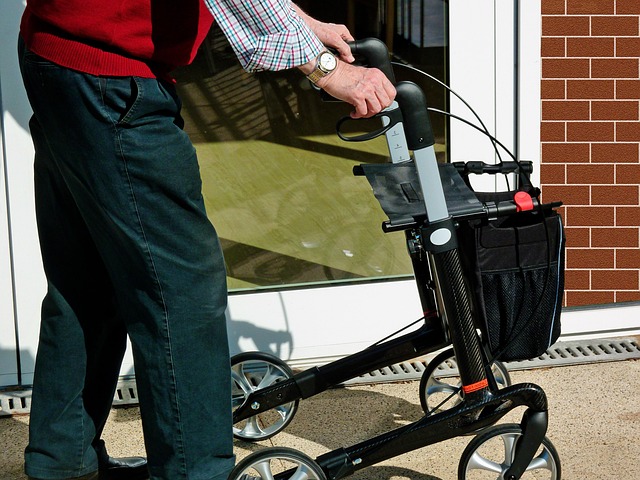Explore helpful tips on fall prevention options for seniors
Falls represent a significant health concern for older adults, affecting millions of seniors annually and often leading to serious injuries or reduced independence. Understanding effective prevention strategies and mobility aids can dramatically reduce fall risks while helping seniors maintain their quality of life. From home modifications to assistive devices, numerous practical solutions exist to create safer environments and support confident movement throughout daily activities.

Falls among seniors remain a leading cause of injury-related hospitalization, making prevention strategies essential for maintaining independence and well-being. Research indicates that one in four adults aged 65 and older experiences a fall each year, yet many of these incidents are preventable through proper planning and the right tools.
Discover Essential Fall Prevention Strategies
Effective fall prevention begins with understanding common risk factors and implementing targeted solutions. Regular exercise programs focusing on balance, strength, and flexibility significantly reduce fall risks. Tai chi, yoga, and supervised strength training help improve stability and coordination. Vision and hearing assessments should occur annually, as sensory impairments contribute to many falls. Medication reviews with healthcare providers identify prescriptions that may cause dizziness or drowsiness. Proper nutrition, including adequate vitamin D and calcium intake, supports bone health and muscle function.
Find Practical Tools for Safer Movement
Mobility aids serve as valuable tools for preventing falls and supporting independent movement. Walking canes provide stability for those with mild balance issues, while rollators offer four-wheel support with built-in seats for rest breaks. Standard walkers without wheels work well for individuals who need maximum stability but have sufficient upper body strength. Grab bars installed in bathrooms and stairways create secure handholds during transfers. Non-slip mats in showers and bathtubs prevent slipping on wet surfaces. Proper footwear with non-slip soles and good support reduces the likelihood of trips and falls.
Learn How to Choose the Right Aids
Selecting appropriate mobility aids requires careful consideration of individual needs and capabilities. Height adjustability ensures proper fit, with handles positioned at wrist level when arms hang naturally at the sides. Weight capacity should exceed the user’s body weight by at least 50 pounds for safety margins. Wheel configurations matter: four-wheel rollators suit active users, while two-wheel walkers provide more stability for those with limited mobility. Folding mechanisms enable easy transport and storage. Professional fitting through physical therapists or medical equipment specialists ensures optimal safety and comfort.
Explore Tips for Home Adjustments
Home modifications create safer living environments and reduce fall hazards throughout daily routines. Adequate lighting in hallways, stairways, and entrances prevents trips over unseen obstacles. Motion-activated lights provide automatic illumination during nighttime movement. Removing loose rugs, securing electrical cords, and clearing walkways eliminate common tripping hazards. Installing handrails on both sides of staircases offers additional support. Raised toilet seats and shower chairs reduce the physical demands of bathroom activities. Organizing frequently used items within easy reach minimizes the need for climbing or stretching.
Maintain Independence with Smart Solutions
Technology-enhanced solutions support senior independence while providing safety monitoring capabilities. Personal emergency response systems enable quick access to help during falls or medical emergencies. Smart home devices with voice activation reduce the need for physical interaction with switches and controls. Automatic medication dispensers prevent dosing errors that could contribute to falls. Wearable devices monitor activity levels and detect unusual movement patterns. Regular communication with family members or caregivers ensures ongoing support without compromising autonomy.
| Product Type | Provider | Key Features | Cost Estimation |
|---|---|---|---|
| Standard Walker | Drive Medical | Lightweight aluminum, adjustable height | $40-80 |
| Rollator Walker | Hugo Mobility | Four wheels, built-in seat, storage basket | $100-250 |
| Walking Cane | HurryCane | Adjustable height, pivoting base | $30-60 |
| Grab Bars | Moen | Stainless steel, various lengths | $25-75 per bar |
| Emergency Alert | Life Alert | 24/7 monitoring, waterproof pendant | $50-70 monthly |
Prices, rates, or cost estimates mentioned in this article are based on the latest available information but may change over time. Independent research is advised before making financial decisions.
Fall prevention requires a comprehensive approach combining physical preparations, environmental modifications, and appropriate assistive devices. Regular assessment of changing needs ensures that prevention strategies remain effective over time. Healthcare professionals, occupational therapists, and certified aging-in-place specialists provide valuable guidance for developing personalized fall prevention plans. By implementing these strategies consistently, seniors can significantly reduce their fall risk while maintaining the independence and confidence needed for active, fulfilling lives.
This article is for informational purposes only and should not be considered medical advice. Please consult a qualified healthcare professional for personalized guidance and treatment.


